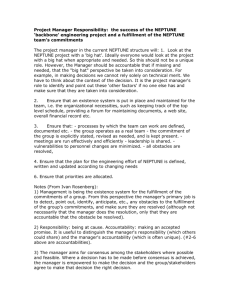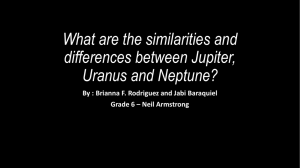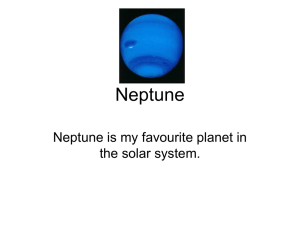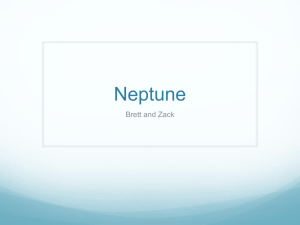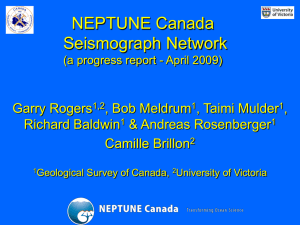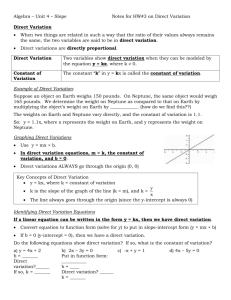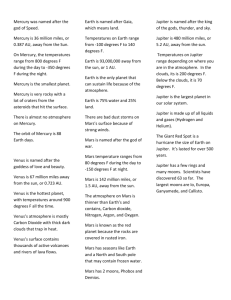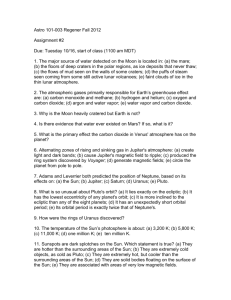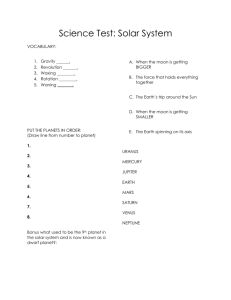Neptune
advertisement
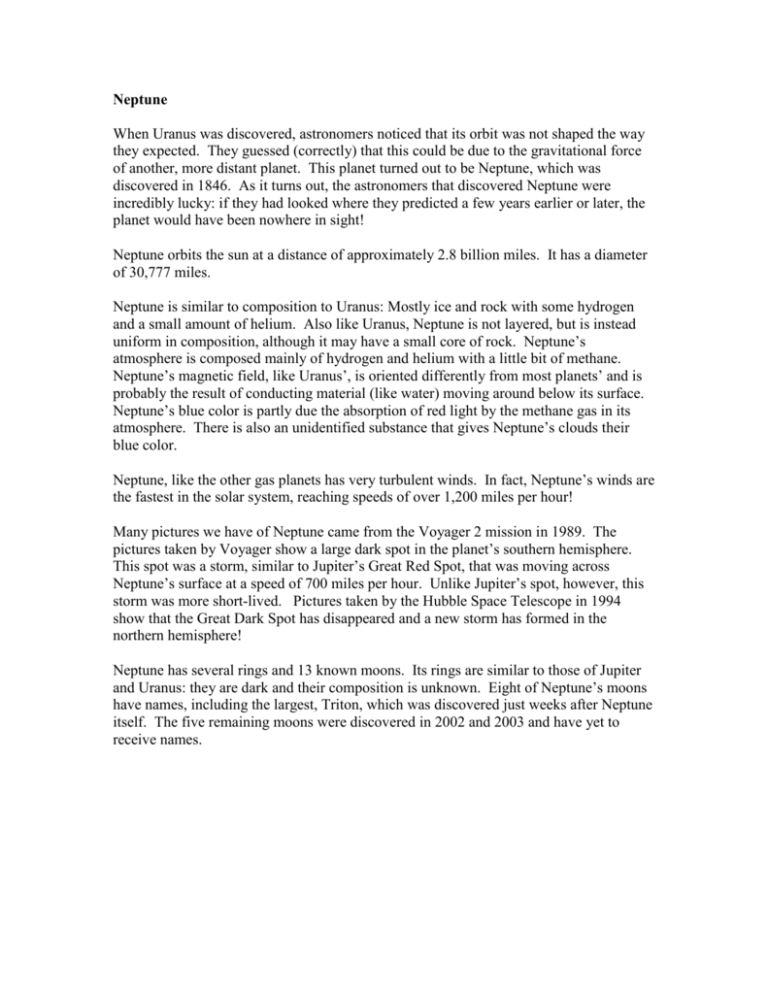
Neptune When Uranus was discovered, astronomers noticed that its orbit was not shaped the way they expected. They guessed (correctly) that this could be due to the gravitational force of another, more distant planet. This planet turned out to be Neptune, which was discovered in 1846. As it turns out, the astronomers that discovered Neptune were incredibly lucky: if they had looked where they predicted a few years earlier or later, the planet would have been nowhere in sight! Neptune orbits the sun at a distance of approximately 2.8 billion miles. It has a diameter of 30,777 miles. Neptune is similar to composition to Uranus: Mostly ice and rock with some hydrogen and a small amount of helium. Also like Uranus, Neptune is not layered, but is instead uniform in composition, although it may have a small core of rock. Neptune’s atmosphere is composed mainly of hydrogen and helium with a little bit of methane. Neptune’s magnetic field, like Uranus’, is oriented differently from most planets’ and is probably the result of conducting material (like water) moving around below its surface. Neptune’s blue color is partly due the absorption of red light by the methane gas in its atmosphere. There is also an unidentified substance that gives Neptune’s clouds their blue color. Neptune, like the other gas planets has very turbulent winds. In fact, Neptune’s winds are the fastest in the solar system, reaching speeds of over 1,200 miles per hour! Many pictures we have of Neptune came from the Voyager 2 mission in 1989. The pictures taken by Voyager show a large dark spot in the planet’s southern hemisphere. This spot was a storm, similar to Jupiter’s Great Red Spot, that was moving across Neptune’s surface at a speed of 700 miles per hour. Unlike Jupiter’s spot, however, this storm was more short-lived. Pictures taken by the Hubble Space Telescope in 1994 show that the Great Dark Spot has disappeared and a new storm has formed in the northern hemisphere! Neptune has several rings and 13 known moons. Its rings are similar to those of Jupiter and Uranus: they are dark and their composition is unknown. Eight of Neptune’s moons have names, including the largest, Triton, which was discovered just weeks after Neptune itself. The five remaining moons were discovered in 2002 and 2003 and have yet to receive names.
